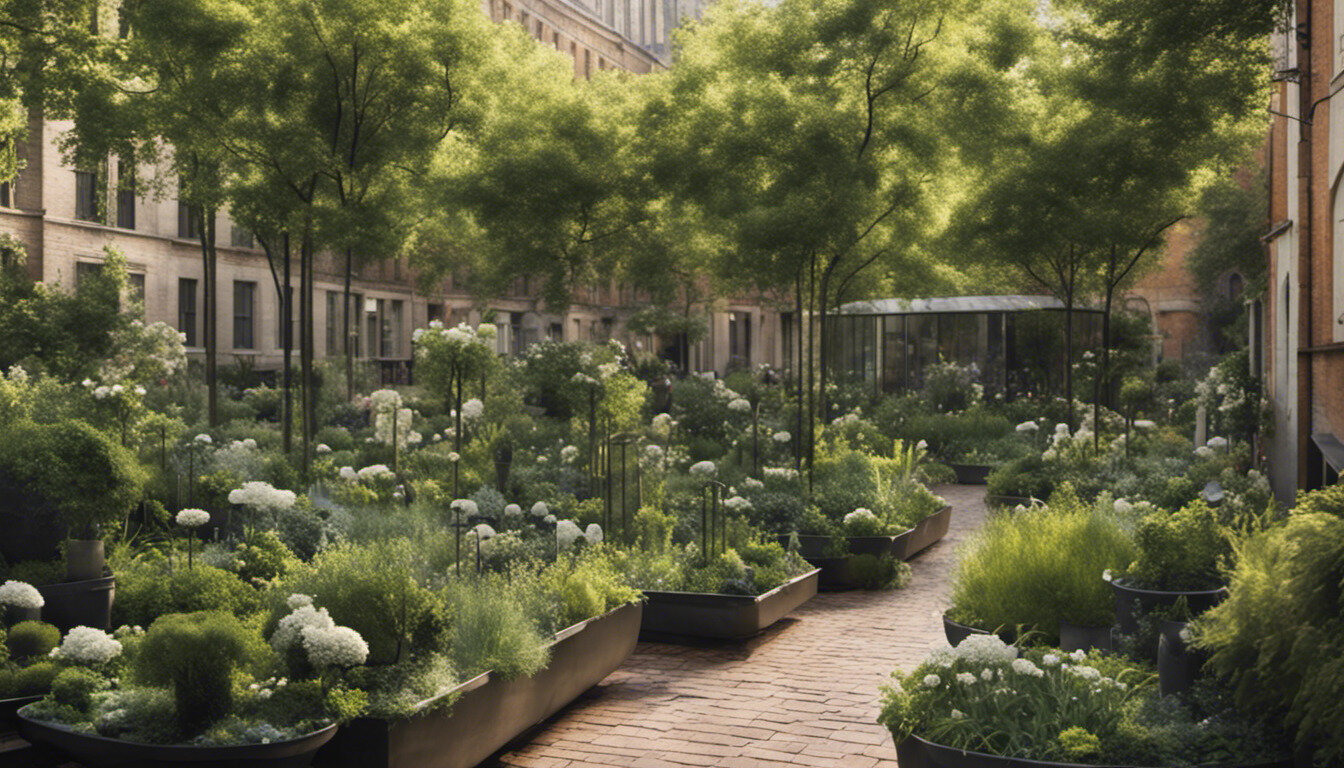City Blooming - An Overview
City Blooming - An Overview
Blog Article
The Best Strategy To Use For City Blooming
Table of ContentsWhat Does City Blooming Do?City Blooming - An OverviewSome Known Facts About City Blooming.9 Easy Facts About City Blooming ExplainedAn Unbiased View of City Blooming
Fascinated in growing food available for sale in the City of Chicago? Thinking concerning beginning a neighborhood garden? Adjustments to the Chicago Zoning Regulation enable farming uses like community yards and metropolitan ranches in lots of parts of the city. Below is a checklist of frequently asked concerns concerning the policies and policies that farmers ought to consider when preparing a city agriculture task.
The zoning modification does not modify any type of various other codes taking care of composting, structure authorizations, buying or renting City possessed residential property, business licenses or environmental contamination. There are existing codes that control these concerns and they remain in full result and might apply to your job. Area gardens are usually had or handled by public entities, civic companies or community-based companies and maintained by volunteers.
Urban ranches expand food that is planned to be offered, either on a not-for-profit or for-profit basis. Due to their commercial purpose, urban ranches require a company permit. Yes. A neighborhood yard is enabled to offer surplus create that was grown on site if the sales are accessory or secondary to the garden's primary purpose described above.
The 10-Minute Rule for City Blooming
The quantity of compost material can not surpass 25 cubic yards at any type of given time according to the criteria in 7-28-715 of the City's Municipal Code. Because the dirt at the majority of new yard websites needs changing, compost, soil, timber chips, or other materials can be obtained to create or improve the expanding area.

If a building authorization is needed after that the hoophouse will be taken into consideration an accessory structure. You can find out even more regarding the building license demands by speaking to the Division of Structures. The 25,000-square-foot dimension limit is planned to avoid a single community yard from controling a given block or diminishing the block's existing property or commercial character.
The limit does not use to yards found in Public Open Space (POS) districts. Can there be more than one area yard that is 25,000 square feet on a solitary block? Fencing is not required, nevertheless, yards that have big car parking locations might be called for to install secure fencing or various other landscape design features.
City Blooming Fundamentals Explained
B1 & B2 areas call for that all commercial use tasks be performed inside. R areas limit industrial activity. The regulations mirror the objective and intent of the Zoning Code. Is fence required for urban ranches? Yes. Fencings might be needed, in addition to landscaping and testing, for sure parking lot and outside work or storage areas depending upon area and the details task taking area.
Urban farms require building permits and zoning authorizations prior to building and construction (balcony and patio garden design). Various other types of city review might be required depending on certain structures, tasks, size, landscape design, licensing, public health and stormwater administration issues.
The Department of Service Matters and Customer Protection can assist figure out the particular type of service certificate that's required. Off street parking is required for a lot of industrial projects in Chicago. The needed number of car park spaces is based on the number of workers functioning on website and not the square video of the expanding space.
The Basic Principles Of City Blooming

Yes. A metropolitan ranch can market compost product generated on site, nevertheless, the operation should adhere to the policies in 7-28-715 of the Chicago Municipal Code. Yes. Aquaponic systems are allowed inside your home on city ranches in several zoning districts. A zoning testimonial and building license is needed in order to mount frameworks or systems and a service permit is required as described over.
As much as five hives or colonies of honey might be maintained as an accessory use. Beekeepers need to sign up with the Illinois Department of Farming. For more details about the recommended zoning modification you may get in touch with the Department of Real Estate and Economic Advancement, Bureau of Planning and Zoning at 312.744.8563.
, click for source which takes area in country areas at the side of residential areas.
About City Blooming
, who seek to create social networks founded on a shared principles of nature and community holism. These networks can create by way of formal institutional assistance, coming to be integrated into local community preparation as a "change town" motion for lasting urban advancement.
The more direct access to fresh veggie, fruit, and meat items that might be realised with metropolitan farming can boost food safety and security and food security while reducing food miles, leading to lower greenhouse gas discharges, consequently adding to climate change mitigation. Some of the very first proof of metropolitan agriculture originates from Mesopotamia.
Report this page